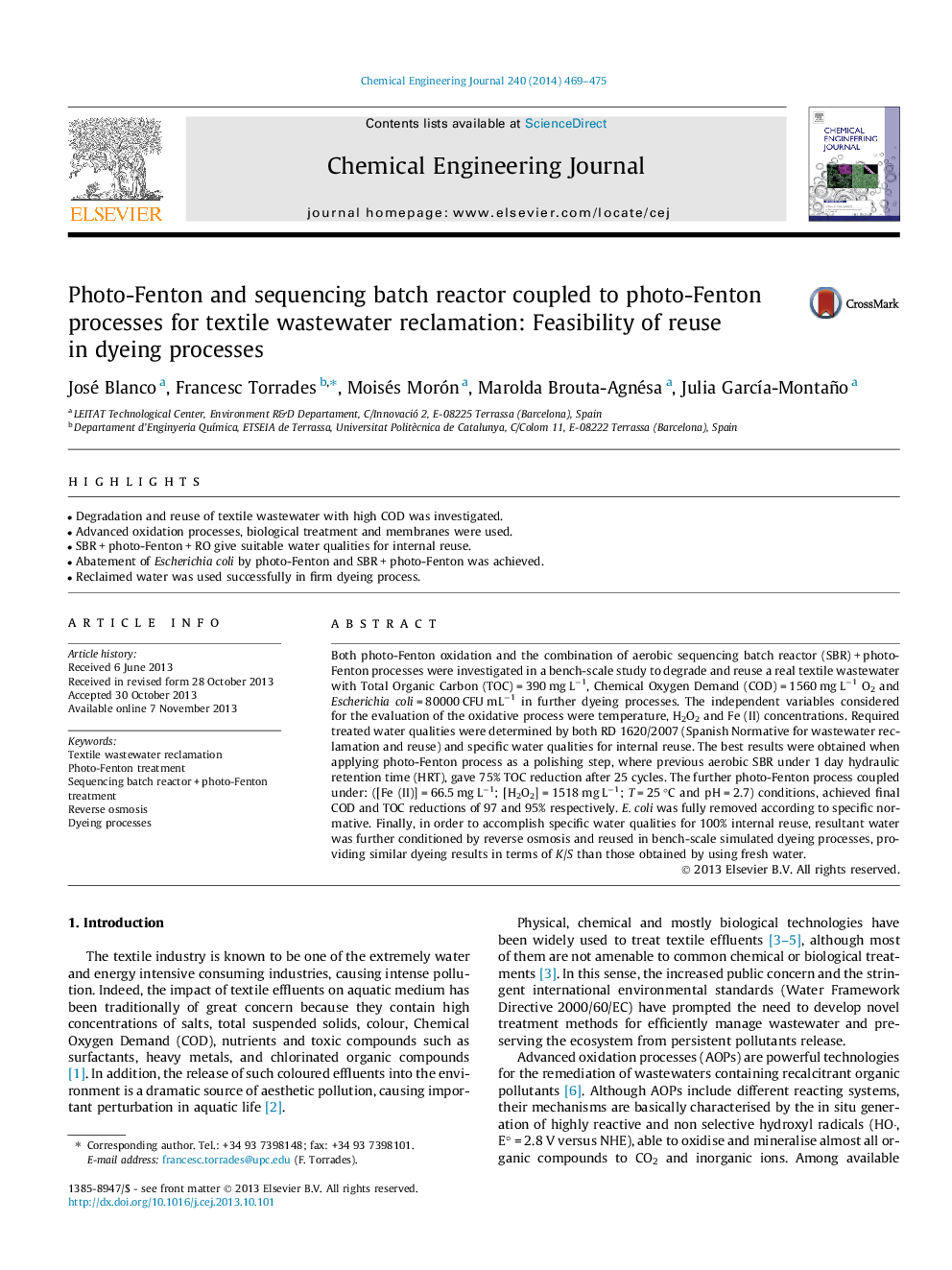| Article ID | Journal | Published Year | Pages | File Type |
|---|---|---|---|---|
| 147699 | Chemical Engineering Journal | 2014 | 7 Pages |
•Degradation and reuse of textile wastewater with high COD was investigated.•Advanced oxidation processes, biological treatment and membranes were used.•SBR + photo-Fenton + RO give suitable water qualities for internal reuse.•Abatement of Escherichia coli by photo-Fenton and SBR + photo-Fenton was achieved.•Reclaimed water was used successfully in firm dyeing process.
Both photo-Fenton oxidation and the combination of aerobic sequencing batch reactor (SBR) + photo-Fenton processes were investigated in a bench-scale study to degrade and reuse a real textile wastewater with Total Organic Carbon (TOC) = 390 mg L−1, Chemical Oxygen Demand (COD) = 1560 mg L−1 O2 and Escherichia coli = 80000 CFU mL−1 in further dyeing processes. The independent variables considered for the evaluation of the oxidative process were temperature, H2O2 and Fe (II) concentrations. Required treated water qualities were determined by both RD 1620/2007 (Spanish Normative for wastewater reclamation and reuse) and specific water qualities for internal reuse. The best results were obtained when applying photo-Fenton process as a polishing step, where previous aerobic SBR under 1 day hydraulic retention time (HRT), gave 75% TOC reduction after 25 cycles. The further photo-Fenton process coupled under: ([Fe (II)] = 66.5 mg L−1; [H2O2] = 1518 mg L−1; T = 25 °C and pH = 2.7) conditions, achieved final COD and TOC reductions of 97 and 95% respectively. E. coli was fully removed according to specific normative. Finally, in order to accomplish specific water qualities for 100% internal reuse, resultant water was further conditioned by reverse osmosis and reused in bench-scale simulated dyeing processes, providing similar dyeing results in terms of K/S than those obtained by using fresh water.
